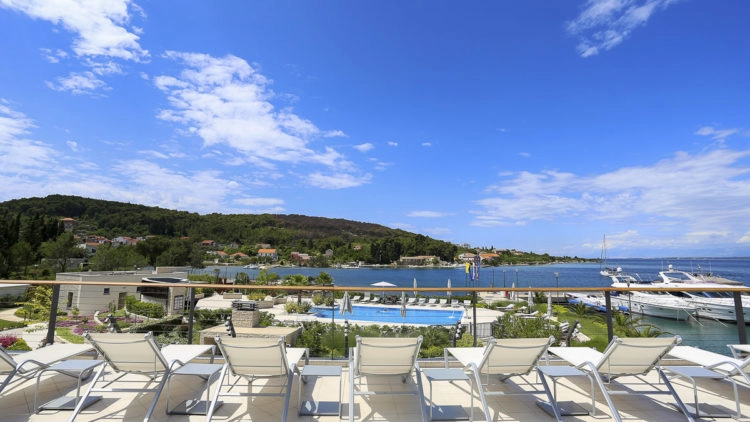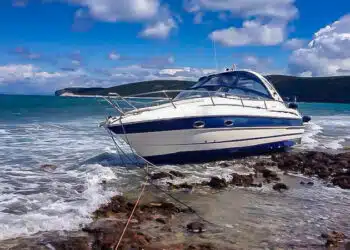Almost as expected, COVID-19 infections caused by the coronavirus increased again at the beginning of the holiday season in Croatia, which is one of the most popular holiday destinations for Germans and Austrians. Do all those who, during the time when Croatia was, according to their own statements, virtually free of the coronavirus and who therefore booked their holidays, now have to worry?
COVID-19 Examine infections more closely
Because school holidays have already started in Austria and Germany and the start of holidays in Bavaria and Baden-Württemberg is still to come, everyone has to decide for themselves whether an Adriatic holiday in COVID 19 times is suitable for them.
Wrap COVID-19 in Croatia
In order to be able to assess this, it is advisable to take a look at the development of new COVID-19 infections in Croatia. On 25 February, the Croatian health authorities confirmed the first case of COVID-19, after which the curve of new infections rose drastically in line with other European countries, but also flattened out again just as quickly as Croatia took drastic measures against coronavirus and seemed to have the situation under control.
Constantly updated table of COVID-19 infections in Croatia
[wppress-covid19 display=”bar” country=”Croatia” custom_title=”yes” custom_title_text=”Croatia – New infections per day” width=”720″ height=”500″ responsive=”yes” show_confirmed=”yes” show_deaths=”yes” show_recovered=”yes” show_active=”yes” confirmed_legend=”Confirmed” deaths_legend=”deaths” recovered_legend=”recovered” active_legend=”current cases” padding=”0″ border_radius=”0″ background_color=”#00000000″ title_color=”#333333″ confirmed_color=”#5082c7″ deaths_color=”#d04b5a” recovered_color=”#4caf50″ active_color=”#e38b4f” title_font_size=”18″ /]
[wppress-covid19 display=”chart” country=”Croatia” custom_title=”yes” custom_title_text=”Croatia – Current total number of infected” width=”720″ height=”500″ responsive=”yes” show_daily_change=”no” show_confirmed=”no” show_deaths=”no” show_recovered=”no” show_active=”yes” active_legend=”current cases” padding=”0″ border_radius=”0″ background_color=”#00000000″ title_color=”#333333″ active_color=”#e38b4f” title_font_size=”18″ /]
border controls with Serbia and Bosnia
With the beginning of the opening of the borders, which was also due to the dependence on tourism, the number of new COVID-19 infections increased again. However, it was not holidaymakers who carried the virus into the country, but primarily seasonal workers from Serbia, Bosnia-Herzegovina, Kosovo, northern Macedonia and to some extent Montenegro and Albania – all countries with a significantly worse epidemiological situation in the Corona crisis than Croatia itself. Strict border controls have now been introduced for these countries, as reported in the Croatian media, and in addition a domestic quarantine for entry has been imposed. Measures similar to those recently introduced by Austria to combat the corona virus
Weddings in Eastern Salvonia
Another problem was in Eastern Slavonia. Here one is used to celebrate opulent weddings, gladly also with relatives from the neighbouring countries, here predominantly Bosnia-Herzegovina and partly Serbia. Many of these celebrations have developed into real coronavirus hotspots, because whenever excessive alcohol consumption is involved, precautions are reduced. In addition, many Croats living abroad came to the country to vote in the recent election. And this first visit after a long time did not stop at the ballot box, of course, but was followed by further meetings with relatives and acquaintances after the corona lockdown.
Numbers have been declining since 11 July
All these developments inevitably led to new infections, with a peak of 140 cases on 11 July. In order not to jeopardise the tourist season, the Croatian authorities reacted by returning to compulsory masks and increasing controls. Such measures do not take effect immediately, but with a certain time lag. Currently, the number of new COVID-19 infections is decreasing again, but still at a high level for Croatia.
Coronavirus in coastal regions only weakly pronounced
If you take a closer look at the COVID-19 infection foci in Croatia, you have to conclude In the coastal region preferred by Croatian tourists, the active COVID-19 infections are at an average level. However, Istria, which has been spared from this so far, reports a high growth rate by Istrian standards with currently 74 cases, while the Kvarner region is almost considered corona-safe. But also in Istria one should not judge hastily, but look more closely. An old people’s home in Umag and a busy hairdresser are therefore considered here to be real corona-virus-slingers.
307 active COVID-19 cases on the coast, 809 inland
In total, the coastal regions including the hinterland show exactly 307 active cases of coronavirus on 22.7.2020, 809 active cases are registered in the region around Zagreb and in Eastern Slavonia according to Croatian authorities. With a few exceptions, Croatia’s classic holiday regions do not present a different picture than those found in Germany or Austria.
[2020-07-22_croatien-corona-zahlen-kueste]
Saturday over 300.000 tourists arrived
At present, therefore, tourists have little to fear from adverse effects beyond the usual COVID-19 protection measures. Obviously, word seems to have got around, as the authorities registered over 300,000 new arrivals last weekend. A quite understandable figure, if you take into account the traffic jams at the border and on the motorways towards the Adriatic Sea last weekend. Up to six hours of waiting in front of the Karawanken tunnel and numerous traffic jams on the Tauern motorway speak for themselves.
arrival if possible not on Saturdays
So if you are planning a trip to the Adriatic Sea in a hurry and want to enjoy the particularly clear water on the Croatian coast this year, you should plan your time or choose an arrival day other than Saturday. As far as the Corona numbers are concerned, there should be nothing to prevent a holiday in Croatia.
Important links for the journey to Croatia
Congestion Austria
Border waiting times Austria/Slovenia
Border waiting times border Croatia
Attention: Do not forget to register with EnterCroatia for entry into Croatia!
Here you will find further articles on the Covid 19 pandemic.













